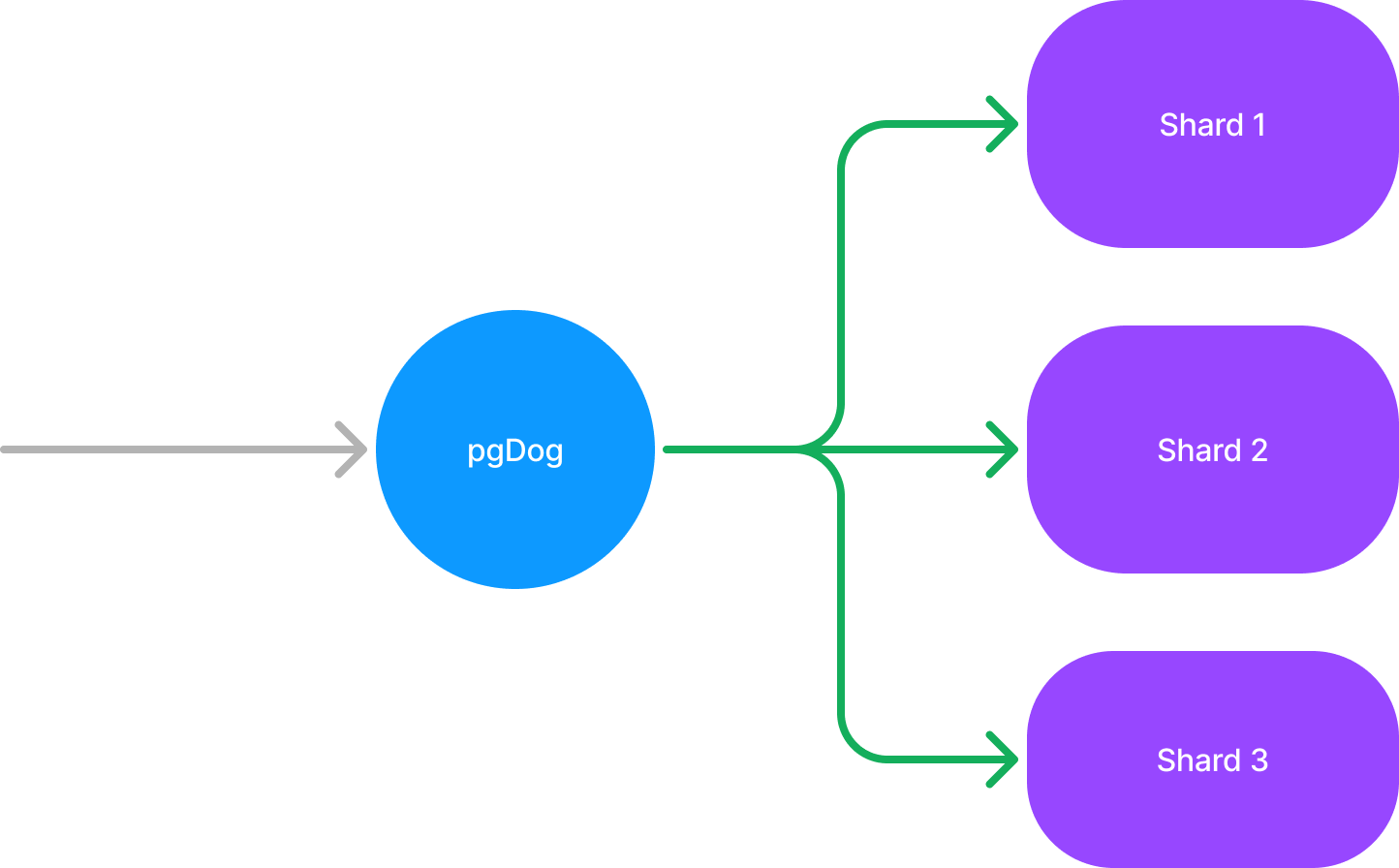Cross-shard queries
If a client can't or chooses not to provide a sharding key, PgDog can route the query to all shards and combine the results transparently. To the client, this looks like the query executed against a single database.

How it works
Since PgDog speaks the Postgres protocol, it can connect to multiple database servers and collect DataRow1 messages as they are being sent by each server. Once all servers finish
executing the query, PgDog processes the result and sends it to the client as if all messages came from one server.
While this works for simple queries, others that involve sorting or aggregation are more complex and require special handling.
Sorting
If the client requests results to be ordered by one or more columns, PgDog can interpret this request and perform the sorting once it receives all data messages from all servers. For queries that span multiple shards, this feature allows to retrieve results in the correct order. For example:
This query doesn't specify a sharding key, so PgDog will send it to all shards in parallel. Once all shards receive the query, they will filter data from their respective "users" table and send
the results ordered by the "id" column.
PgDog will receive rows from all shards at the same time. However, Postgres is not aware of other shards in the system so the overall sorting order will be wrong. PgDog will collect all rows and sort them by the "id" column before sending the results over to the client.
Under the hood
The SQL syntax provides many ways to specify ordering. Currently, PgDog supports 2 formats:
- Order by column name(s)
- Order by column position
Note
Ordering using a function, e.g. ORDER BY random() is not currently supported.
Order by column name
PgDog can extract the column names from the ORDER BY clause and match them
to values in DataRow1 messages based on their position in the RowDescription1 message.
For example, if the query specifies ORDER BY id ASC, email DESC, both "id" and "email" columns will be present in the RowDescription message along with their data types and locations in DataRow1 messages.
The rows are received asynchronously as the query is executing on the shards. Once the messages are buffered, PgDog will sort them using the extracted column values and return the sorted result to the client.
Example
Order by column index
If the client specifies only column positions used for sorting, e.g., ORDER BY 1 ASC, 4 DESC, the mechanism for extracting data from rows is the same, except this time we don't need to look up columns by name: we have their position in the RowDescription1 message.
The rest of the process is identical to ordering by column name and results are returned in the correct order to the client.
Example
DDL
DDL statements, i.e., queries that modify the database schema, like CREATE TABLE, are sent to all shards simultaneously. This allows clients to modify all shard schemas at the same time and requires no special changes to systems used for schema management and migrations.
This assumes that all shards in the cluster have an identical schema. This is typically desired to make management of sharded databases simpler, but in cases where this is not possible, DDL queries can always be routed to specific shards using manual routing.
Note
PgDog doesn't use two-phase commit so make sure your DDL statements are idempotent and can be retried in case of an error.
Cross-shard changes
Currently, PgDog doesn't use 2-phase commit to synchronize changes across all shards. Support for this feature is currently being built, and will require database operators to enable prepared transactions.
Aggregates
PgDog has limited support for aggregate functions. Currently, the following functions are supported:
min()max()count()/count(*)sum()
Aggregates have to be executed over supported data types, i.e.: bigint, integer, float and double precision.
Limitations
Not all aggregates can be calculated in a cross-shard query. For example, avg() requires both the sum and the count of all values, which a query result won't have. In this case, the query needs to be rewritten to include both values.
Additionally, if using GROUP BY, the grouping column must be included in the result set. For example, the following aggregate won't work, currently, in PgDog:
PgDog works at the network layer and can only see the data sent and received by Postgres. To perform this aggregate,
we need to see the value for the "email" field. This query should be rewritten to include it, like so:
Note
In the future, PgDog will be automatically rewriting queries to ensure aggregates can be calculated transparently to the client. See Roadmap for more details.